Chemistry Lab Safety Rules – Why is it important to follow lab safety rules
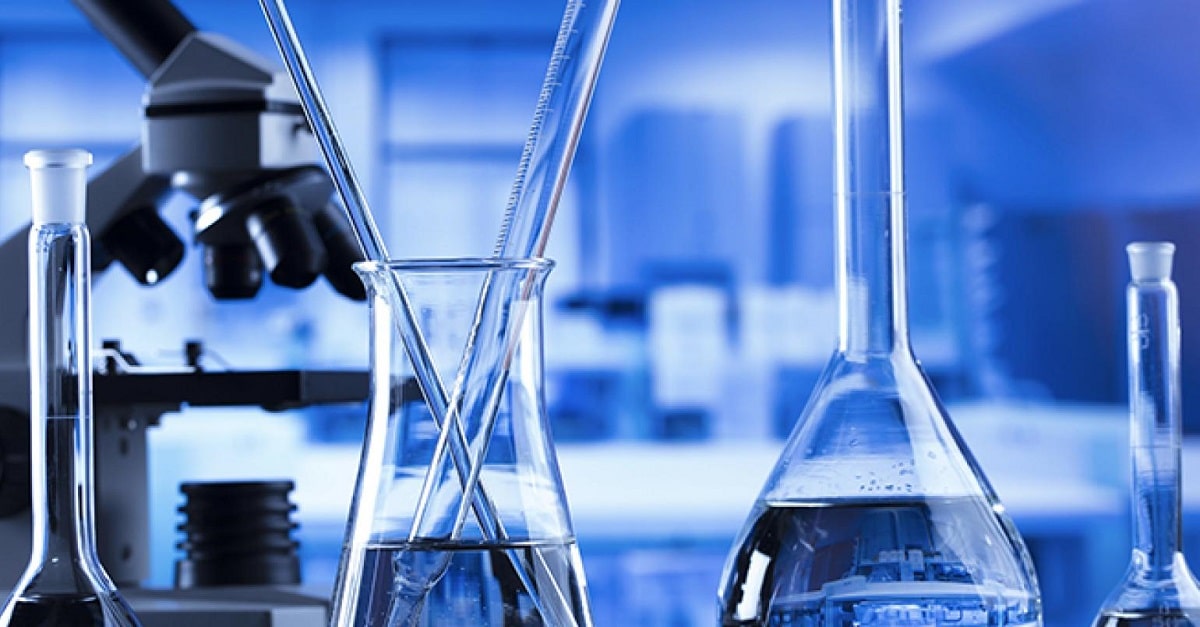
When we are working in a lab and dealing with medical equipment, heavy-duty supplies, and hazardous chemicals, the most important concern is lab safety. It is very important to consider proper usage and care of medical supplies when working in a lab because accidents are most likely to occur. This is a reason why is it important to follow lab safety rules
Table of Contents
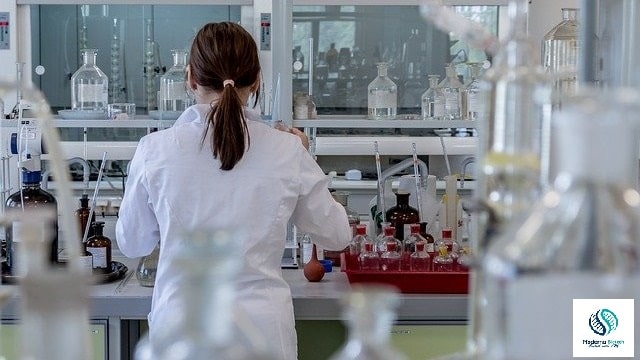
Chemistry Lab Safety Rules
Chemistry laboratories are exciting places where experiments come to life, but they also come with potential hazards. To ensure a safe and productive environment, it’s crucial to follow strict safety protocols. Here are some essential chemistry lab safety rules to keep in mind:
1. Wear Appropriate Attire:
- Always wear proper attire, including closed-toe shoes, long pants, and a lab coat.
- Avoid loose clothing and tie back long hair to prevent accidents.
2. Use Personal Protective Equipment (PPE):
- Wear safety goggles to protect your eyes from chemical splashes or spills.
- Use gloves when handling chemicals to prevent skin contact and potential chemical burns.
- In certain situations, wear a face mask or respirator to avoid inhaling harmful fumes.
3. Understand Chemical Properties:
- Familiarize yourself with the properties of the chemicals you’re working with, including their toxicity, flammability, and reactivity.
- Read and follow all safety data sheets (SDS) provided for each chemical.
4. Handle Chemicals Safely:
- Never taste or smell chemicals unless instructed to do so by a qualified instructor.
- Always handle chemicals in a well-ventilated area to minimize exposure to fumes.
- Use caution when transferring chemicals and never pour them down the sink unless permitted.
5. Know Emergency Procedures:
- Familiarize yourself with the location of safety equipment such as fire extinguishers, emergency showers, and eyewash stations.
- Know the procedures for handling chemical spills, fires, and injuries, and report any accidents immediately to the instructor.
6. Practice Proper Equipment Usage:
- Use laboratory equipment only for its intended purpose and with proper training.
- Inspect glassware and equipment for damage before use, and report any defects to the instructor.
- Use heat-resistant mats and handle hot glassware with caution to prevent burns.
7. Maintain a Clean Workspace:
- Keep your work area organized and free of clutter to prevent accidents.
- Dispose of chemicals, waste, and broken glassware in designated containers according to laboratory protocols.
- Clean up spills promptly and thoroughly to avoid slips and contamination.
8. Follow Experiment Instructions Carefully:
- Read experiment procedures thoroughly before starting and follow instructions precisely.
- Never perform unauthorized experiments or modify procedures without approval from the instructor.
- Always label containers properly to avoid confusion and accidental misuse.
9. Practice Good Laboratory Etiquette:
- Respect the work of others and avoid distracting or interfering with their experiments.
- Never eat, drink, or chew gum in the laboratory to prevent contamination.
- Wash your hands thoroughly after handling chemicals and before leaving the lab.
By adhering to these chemistry lab safety rules, you can protect yourself, your colleagues, and the environment from potential hazards. Remember, safety should always be the top priority in any laboratory setting. Happy experimenting!
Biology Lab Safety Rules
Biosafety rules for biology labs are as follows;
- We don’t have to do pipetting by mouth.
- For containment, we must use cabinets of biological safety whenever there is a chance of generating droplets or aerosols during the experiment.
- It’s good to practice carefully work with infectious fluids in order to avoid the generation of aerosols.
- The lab technician when operating with cells, tissues, human blood, and body fluids must have to apply and understand universal safety precautions.
- Where there are no alternatives, they have to restrict the usage of syringes and needles. To avoid self-inoculation, the lab technician must carefully use sharps, syringes, and needles.
- Recapping of needles and syringes should be avoided.
- The sharps have to dispose of in a correctly labeled and punctured resistant leak or container.
- The person who is working in a lab and dealing with lab equipment should have to wear a lab coat, surgical gloves, and eyewear if needed.
- They don’t have to wear the same lab coat outside of the laboratory as there is a chance of spreading contaminants.
- After doing all lab activities, they have to wash hands, and properly removing PPE, and gloves in order to avoid infectious agents.
- It is prohibited to eat, drink, smoke, apply cosmetics, and manipulate contact lenses. Storing of foods is not allowed in lab freezers and refrigerators. It is also not permitted to cook any food in the lab microwave Owen. (why it is important to follow lab safety rules)
What are Biological safety levels?
BSL (Biosafety levels) are sequences of protection referred to autoclave relevant activities that go on in specific biological labs. These are considered individual safeguards that are intended for lab personnel along with the community and the surrounding environment. (why it is important to follow lab safety rules)
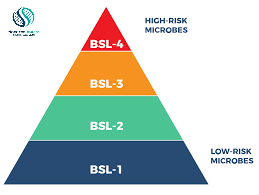
Biosafety level 1 (BSL1):
- Biosafety level 1 is the lowest level among all biological safety levels.
- The labs of Biosafety level 1 are used to work with agents that are not infectious and are not known for causing diseases to healthy animals and humans.
- Here, standard practices of microbiology are followed and research is usually performed on standard open lab benches using special containment equipment.
- These labs must have a sink available for washing hands and lab personnel should have to wear gloves and lab coats.
- Several types of diseases are studied under BSL 1. These include canine hepatitis, non-pathogenic Escherichia coli, etc.
Biosafety level 2 (BSL2):
- Biosafety level 2 is the second among biological safety levels.
- The labs of biosafety level 2 are used to work with agents that are related to moderate human illnesses or infectious & pathogenic organisms.
- Like BSL 1, standard practices of microbiology are followed along with enhanced measures.
- The lab personnel must have to take greater care in order to protect themselves from injuries for example skin breaches and cuts along with mucous membrane exposure and ingestion.
- The diseases which are usually studied under BSL 2 are staph infections, human immunodeficiency virus, and equine encephalitis viruses.
Biosafety level 3 (BSL3):
- Biosafety level 3 is the third among biological safety levels.
- The labs of biosafety level 3 are used to work with agents that are harmful/toxic or indigenous and are known for causing great harm to patients.
- The microbes that are operated in these labs are known for causing potentially lethal diseases through the inhalation route.
- The lab personnel could receive immunization against microbes they are working with.
- These labs are often sternly registered and controlled by proper government agencies.
- The diseases that are studied under BS-3 include the West Nile virus, tuberculosis, and yellow fever.
Biosafety level 3 (BSL4):
- Biosafety level 4 is the 4th among biological safety levels.
- The labs of biosafety level 4 are used to work with agents that are most harmful/toxic or indigenous and are known for causing great harm to patients.
- The microbes that are operated in these labs are known for causing potentially most lethal diseases.
- The lab personnel could receive immunization against microbes they are working with.
- These labs are often sternly registered and controlled by proper government agencies.
- The diseases that are studied under BS-4 include the Ebola virus.
Sample collection procedure for bacteria and human blood:
Sample collection procedure for human blood:
During the blood collection procedure, the safety of the phlebotomist and the patient must consider. The main purpose is to take the best likely sample for the performance of the test. Only licensed and trained personnel could obtain blood.
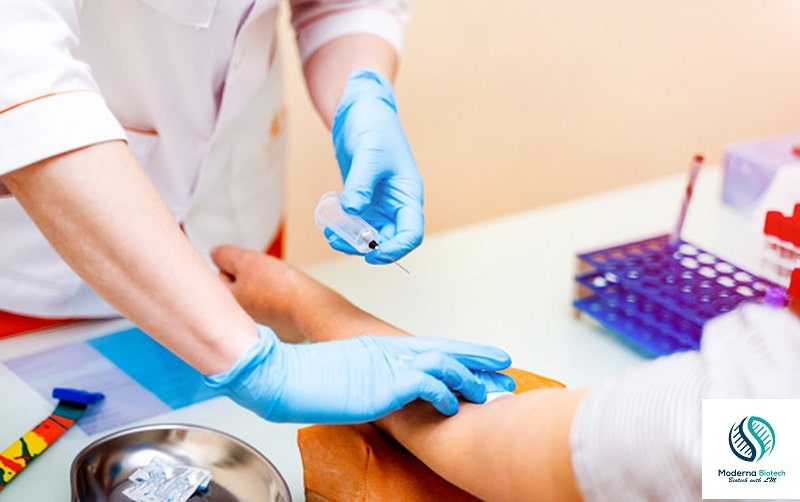
The procedure of blood sample collection:
- Firstly, it is imperative to make the patient comfortable whether he is reclining or sitting.
- Throughout the whole procedure, while obtaining a blood sample, the personnel should wear gloves.
- The next step is to tightly fasten a tourniquet around the arm of the patient, just directly above the elbow then instruct the patient to keep his/her arm straight and make a fist.
- Then search the suitable vein by gently palpating the antecubital area. It is required to examine other wrists, hands, or arms for the best suitable vein.
- When the vein has been found, clean carefully the site with alcohol swap and let it dry.
- Then remove the needle cap of a syringe and grasp the hand of the patient with freehand of yours to hold underlying tissue taut and skin.
- By rapid deliberate motion, insert the needle into the vein and start withdrawing the blood by pulling it back through the syringe plunger.
- If blood doesn’t come, it is required to make tiny adjustments to the position of the needle for penetration of the vein.
- When enough blood is withdrawn from the vein, release the tourniquet.
- After successful procuration of blood, apply an alcohol swab to an area with pressure until bleeding stops.
- Tourniquets and syringes should discard quickly after use.
Sample collection procedure for bacteria:
- For dealing and accumulating with all specimens, use universal precautions.
- All the specimens must be labeled appropriately with a patient identifier.
- To collect bacteria on the end of the cotton swab, the first step is to roll a clean swab of cotton in the patient’s mouth. And then draw lightly a scribble with it on gelled agar.
- You can also collect bacteria from any of the surfaces you want.
- For getting a good sample, lightly dampen the swab of cotton with water. And then roll it in your finger so it easily touches all surfaces to be tested.
- After collecting the bacterial sample, supply it in the laboratory as soon as possible for further examination.
See also what does hematology used for?
Cmovies Free movies – Your Personal Theater for Unlimited Streaming



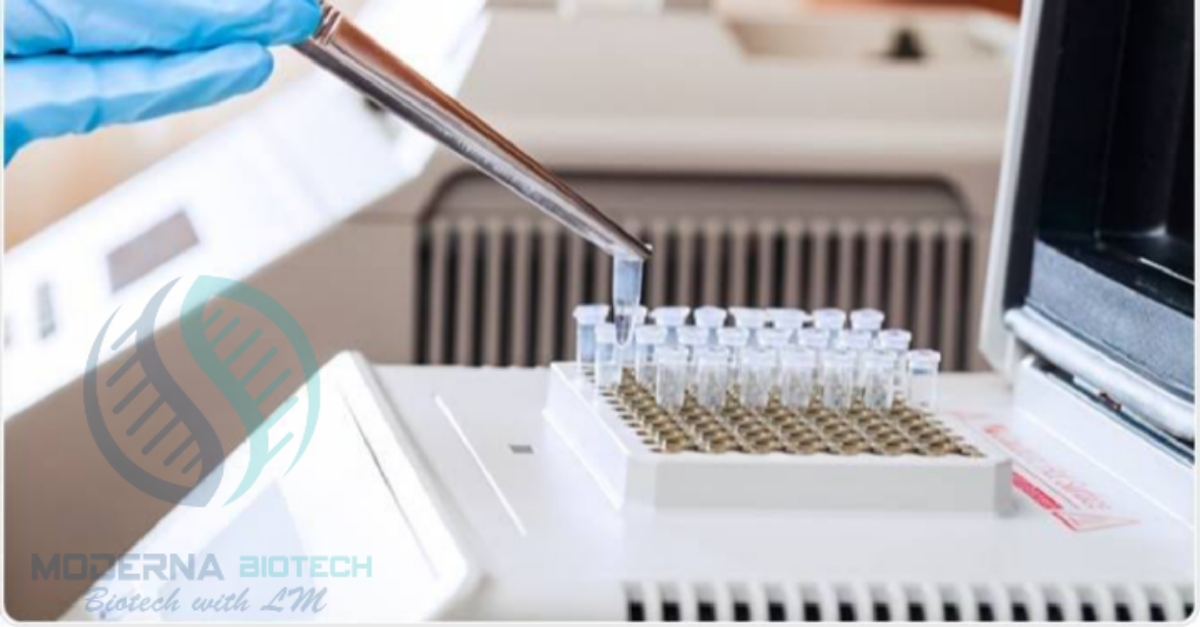
Thanks for posting this valuable content on lab 🧫🧪 biosafety
أعتقد أنني أبكي. هذا رائع.
You are a very clever person!
I think this is among the most important information for me. And i’m glad reading your article. But should remark on some general things, The website style is wonderful, the articles is really nice : D. Good job, cheers
wonderful points altogether, you simply gained a brand new reader. What would you suggest about your post that you made some days ago? Any positive?
Usually I do not read post on blogs, but I wish to say that this write-up very forced me to try and do so! Your writing style has been surprised me. Thanks, quite nice article.
which post you are talking about?
Hello there! Do you know if they make any plugins to safeguard against hackers? I’m kinda paranoid about losing everything I’ve worked hard on. Any tips?
Great write-up, I抦 regular visitor of one抯 site, maintain up the nice operate, and It’s going to be a regular visitor for a lengthy time.
I as well as my guys have been reading through the excellent tips and tricks on your site and then all of the sudden developed a terrible feeling I never expressed respect to the web blog owner for those secrets. These ladies had been stimulated to see all of them and have in effect pretty much been using those things. Thanks for turning out to be so accommodating and then for picking this form of superior subjects most people are really needing to discover. Our own sincere regret for not expressing gratitude to you earlier.
Wordfence is the best one
I am curious to find out what blog system you’re working with? I’m having some small security issues with my latest blog and I would like to find something more risk-free. Do you have any suggestions?
Thanks for your marvelous posting! I really enjoyed reading it, you happen to be a great author.I will remember to bookmark your blog and definitely will come back very soon. I want to encourage yourself to continue your great job, have a nice afternoon!
Hey! Someone in my Facebook group shared this site with us so I came to look it over. I’m definitely loving the information. I’m bookmarking and will be tweeting this to my followers! Terrific blog and terrific design and style.
Howdy are using WordPress for your site platform? I’m new to the blog world but I’m trying to get started and set up my own. Do you require any coding expertise to make your own blog? Any help would be greatly appreciated!
You can contact us directly at [email protected]
Great work! This is the type of info that should be shared around the net. Shame on the search engines for not positioning this post higher! Come on over and visit my website. Thanks =)
My brother suggested I might like this blog. He was totally right. This post truly made my day. You cann’t imagine just how much time I had spent for this info! Thanks!
I like the valuable info you provide in your articles. I抣l bookmark your blog and check again here frequently. I am quite certain I抣l learn plenty of new stuff right here! Good luck for the next!
Flat design is going to die.
Pink. I’d love to see a video of how it works.
Hello all, here every person is sharing sujch know-how,
so it’s pleasant too rdad this website, and I used to go to see this website daily.
Has anyone vaped The Milkman Salt Eliquid?
This site is known as a stroll-by for all the info you wanted about this and didn抰 know who to ask. Glimpse here, and you抣l positively discover it.
I was just looking for this information for some time. After six hours of continuous Googleing, finally I got it in your site. I wonder what’s the lack of Google strategy that do not rank this kind of informative sites in top of the list. Normally the top websites are full of garbage.
amount of people who take cbd in nebraska
Has anybody been to The OHMen Vape Shop? x